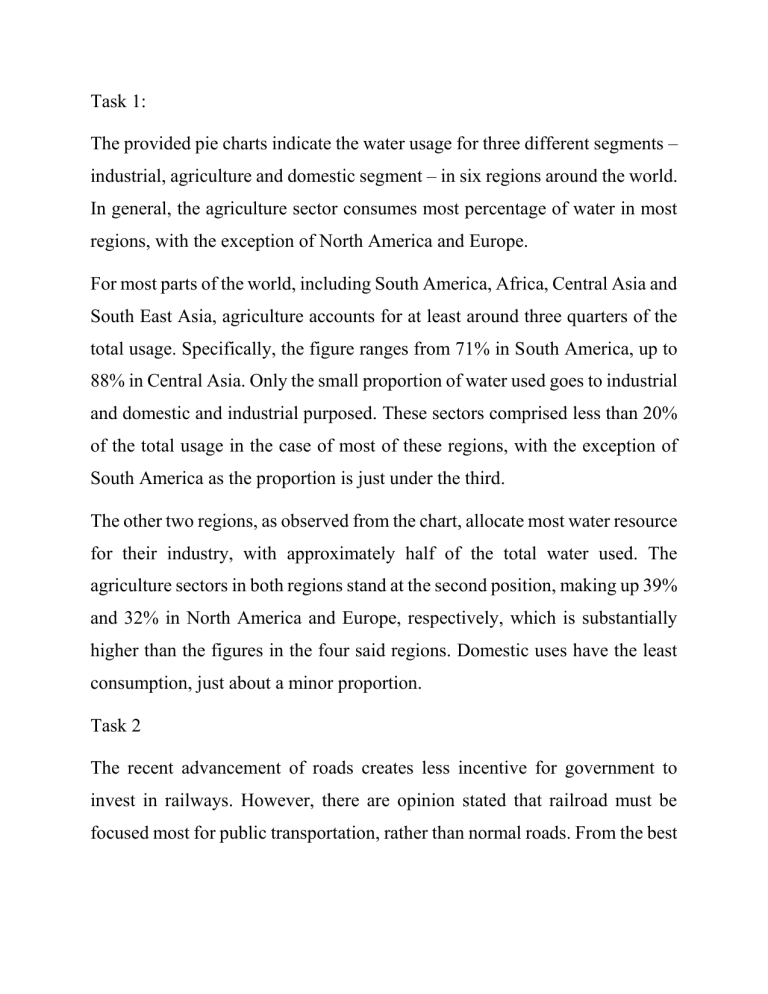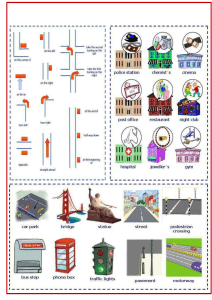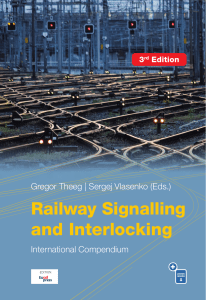Water Usage & Transportation Infrastructure Analysis
advertisement

Task 1: The provided pie charts indicate the water usage for three different segments – industrial, agriculture and domestic segment – in six regions around the world. In general, the agriculture sector consumes most percentage of water in most regions, with the exception of North America and Europe. For most parts of the world, including South America, Africa, Central Asia and South East Asia, agriculture accounts for at least around three quarters of the total usage. Specifically, the figure ranges from 71% in South America, up to 88% in Central Asia. Only the small proportion of water used goes to industrial and domestic and industrial purposed. These sectors comprised less than 20% of the total usage in the case of most of these regions, with the exception of South America as the proportion is just under the third. The other two regions, as observed from the chart, allocate most water resource for their industry, with approximately half of the total water used. The agriculture sectors in both regions stand at the second position, making up 39% and 32% in North America and Europe, respectively, which is substantially higher than the figures in the four said regions. Domestic uses have the least consumption, just about a minor proportion. Task 2 The recent advancement of roads creates less incentive for government to invest in railways. However, there are opinion stated that railroad must be focused most for public transportation, rather than normal roads. From the best of my knowledge, while this can be true at some degree, it is not the best solution. As a matter of fact, railway is still a crucial component making up the transportation infrastructure. The ability to transport substantial amount of goods, especially ones for industrial use, in a single trip is desirable. As trains are operated on separated tracks and cannot be interrupted by other road vehicles, they avoid traffic congestion and are viable for a timely basis, which can be suitable for production planning. However, if the planners only focus on the railway without looking at normal road, the chance is they may miss the opportunity to exploit one of the most essential feature, which is the flexibility. While trains have fixed tracks which can be an advantage for not being interrupted, the rerouting can be a challenge when such incident arise. For instance, if a railway line is failed, then the train plans can potentially be messed up as the number of available lines is limited. Meanwhile, normal vehicles can choose another road or highway to avoid the congestion. Furthermore, investing in roads is more economical compare to railroads. Average cost per one kilometer of road is ten times cheaper than the same unit of railway, not to mention the road can utilize existing vehicles. This is crucial to developing countries, as the budget is limited and needed to be allocated for more short-term projects. In conclusion, roads and railways are important factors of national traffic infrastructure, with their own set of pros and cons. As such, the investment should be efficiently allocated for both of them, not overly focus on just one kind.







